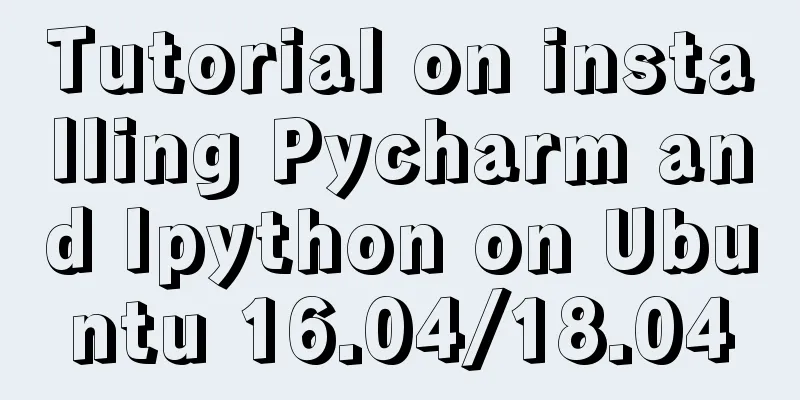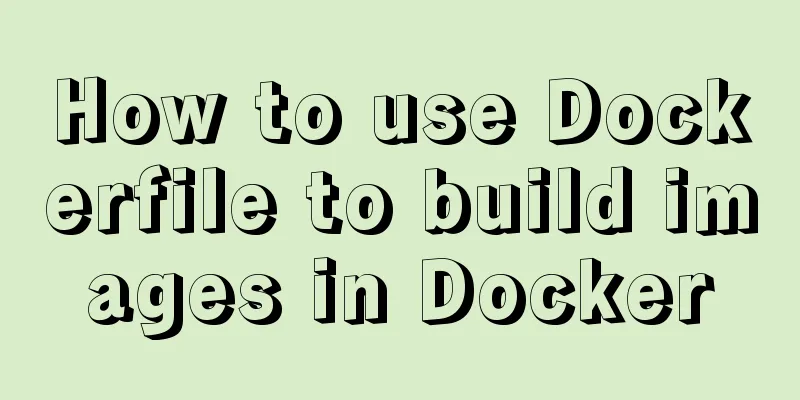Understanding v-bind in vue

1. Analysis of key source code of v-bind1. Where are v-bind attributes stored uniformly: attrsMap and attrsList<p v-bind:title="vBindTitle"></p> Assuming that the After getting this HTML tag, Vue processes the title attribute and does the following steps:
As for how to handle common attribute values such as 2. Parse HTML, parse the attribute set attrs, and return it in the start callback
function handleStartTag (match) {
...
const l = match.attrs.length
const attrs = new Array(l)
for (let i = 0; i < l; i++) {
const args = match.attrs[i]
...
attrs[i] = {
name: args[1],
value: decodeAttr(value, shouldDecodeNewlines)
}
}
...
if (options.start) {
// Upload to the start function here options.start(tagName, attrs, unary, match.start, match.end)
}
}
3. Create ASTElement in the start callback, createASTElement(... ,attrs, ...)
// Parsing HMTL
parseHTML(template, {
...
start(tag, attrs, unary, start, end) {
let element: ASTElement = createASTElement(tag, attrs, currentParent) // Note the attrs here
}
})
4. After creation, ASTElement will generate attrsList and attrsMap
// Create AST element export function createASTElement (
tag: string,
attrs: Array<ASTAttr>, // attribute object array parent: ASTElement | void // parent element is also ASTElement
): ASTElement { // Returns ASTElement
return {
type: 1,
tag,
attrsList: attrs,
attrsMap: makeAttrsMap(attrs),
rawAttrsMap: {},
parent,
children: []
}
}
5. Data type definition of attrs
//Declare an ASTAttr attribute abstract syntax tree object data type declare type ASTAttr = {
name: string; // attribute namevalue: any; // attribute valuedynamic?: boolean; // is it a dynamic attributestart?: number;
end?: number
};
6. Binding attribute acquisition functionBinding attribute acquisition function getBindingAttr and attribute operation function getAndRemoveAttr
export function getBindingAttr (
el: ASTElement,
name: string,
getStatic?: boolean
): ?string {
const dynamicValue =
getAndRemoveAttr(el, ':' + name) ||
getAndRemoveAttr(el, 'v-bind:' + name)
if (dynamicValue != null) {
return parseFilters(dynamicValue)
} else if (getStatic !== false) {
const staticValue = getAndRemoveAttr(el, name)
if (staticValue != null) {
return JSON.stringify(staticValue)
}
}
}
// note: this only removes the attr from the Array (attrsList) so that it
// doesn't get processed by processAttrs.
// By default it does NOT remove it from the map (attrsMap) because the map is
// needed during codegen.
export function getAndRemoveAttr (
el: ASTElement,
name: string,
removeFromMap?: boolean
): ?string {
let val
if ((val = el.attrsMap[name]) != null) {
const list = el.attrsList
for (let i = 0, l = list.length; i < l; i++) {
if (list[i].name === name) {
list.splice(i, 1) // Remove an attribute from attrsList, will not remove break from attrsMap
}
}
}
if (removeFromMap) {
delete el.attrsMap[name]
}
return val
}
2. How to get the value of v-bind Take the following code as an example to analyze how I will analyze it by writing down a few scenes:
vBind:{
key: +new Date(),
title: "This is a HTML attribute v-bind",
class: "{ borderRadius: isBorderRadius }"
style: "{ minHeight: 100 + 'px' , maxHeight}"
text-content: "hello vue v-bind"
}
<div
v-bind:key="vBind.key"
v-bind:title="vBind.title"
v-bind:class="vBind.class"
v-bind:style="vBind.style"
v-bind:text-content.prop="vBind.textContent"
/>
</div>
1. v-bind:key source code analysis
function processKey (el) {
const exp = getBindingAttr(el, 'key')
if(exp){
...
el.key = exp;
}
}
The 2. v-bind:title source code analysis
function processAttrs(el){
const list = el.attrsList;
...
if (bindRE.test(name)) { // v-bind
name = name.replace(bindRE, '')
value = parseFilters(value)
...
addAttr(el, name, value, list[i], ...)
}
}
export const bindRE = /^:|^\.|^v-bind:/
export function addAttr(el: ASTElement, name: string, value: any, range?: Range, dynamic?: boolean) {
const attrs = dynamic
? (el.dynamicAttrs || (el.dynamicAttrs = []))
: (el.attrs || (el.attrs = []))
attrs.push(rangeSetItem({ name, value, dynamic }, range))
el.plain = false
}
By reading the source code, we can see that for native attributes, such as title, vue will first parse 3. v-bind:class source code analysis
function transformNode (el: ASTElement, options: CompilerOptions) {
const warn = options.warn || baseWarn
const staticClass = getAndRemoveAttr(el, 'class')
if (staticClass) {
el.staticClass = JSON.stringify(staticClass)
}
const classBinding = getBindingAttr(el, 'class', false /* getStatic */)
if (classBinding) {
el.classBinding = classBinding
}
}
In the 4. v-bind:style source code analysis Style is an
function transformNode (el: ASTElement, options: CompilerOptions) {
const warn = options.warn || baseWarn
const staticStyle = getAndRemoveAttr(el, 'style')
if (staticStyle) {
el.staticStyle = JSON.stringify(parseStyleText(staticStyle))
}
const styleBinding = getBindingAttr(el, 'style', false /* getStatic */)
if (styleBinding) {
el.styleBinding = styleBinding
}
}
In the 5. v-bind:text-content.prop source code analysis Let's look at the source code.
function processAttrs(el) {
const list = el.attrsList
...
if (bindRE.test(name)) { // v-bind
if (modifiers) {
if (modifiers.prop && !isDynamic) {
name = camelize(name)
if (name === 'innerHtml') name = 'innerHTML'
}
}
if (modifiers && modifiers.prop) {
addProp(el, name, value, list[i], isDynamic)
}
}
}
export function addProp (el: ASTElement, name: string, value: string, range?: Range, dynamic?: boolean) {
(el.props || (el.props = [])).push(rangeSetItem({ name, value, dynamic }, range))
el.plain = false
}
props?: Array<ASTAttr>;
From the source code above, we can see that There is a question worth pondering: Why do this? What are the similarities and differences with HTML attributes?
6. v-bind modifier.camel.sync source code analysis . In fact, I was confused when I first saw the .sync modifier, but after reading the component's .sync carefully and combining it with actual work, I found its power. <Parent v-bind:foo="parent.foo" v-on:updateFoo="parent.foo = $event" ></Parent> In Vue, Is there a more concise way to write it? ? ? That's what we have here, the .sync operator. It can be shortened to: <Parent v-bind:foo.sync="parent.foo"></Parent> Then trigger it in the child component through Let's look at the source code:
if (modifiers.camel && !isDynamic) {
name = camelize(name)
}
if (modifiers.sync) {
syncGen = genAssignmentCode(value, `$event`)
if (!isDynamic) {
addHandler(el,`update:${camelize(name)}`,syncGen,null,false,warn,list[i])
// Hyphenate is a hyphenation function, where camelize is a camel case function if (hyphenate(name) !== camelize(name)) {
addHandler(el,`update:${hyphenate(name)}`,syncGen,null,false,warn,list[i])
}
} else {
// handler w/ dynamic event name
addHandler(el,`"update:"+(${name})`,syncGen,null,false,warn,list[i],true)
}
}
By reading the source code, we can see that: For the attributes of To summarize This is the end of this article about understanding v-bind in vue. For more relevant content about v-bind in vue, please search for previous articles on 123WORDPRESS.COM or continue to browse the following related articles. I hope you will support 123WORDPRESS.COM in the future! You may also be interested in:
|
<<: Summary of some points to note when registering Tomcat as a service
>>: Comparison of the efficiency of different methods of deleting files in Linux
Recommend
Detailed explanation of the meaning and difference between MySQL row locks and table locks
1. Introduction The difference between row locks ...
Implementation of Nginx configuration https
Table of contents 1: Prepare https certificate 2:...
Is mysql a relational database?
MySQL is a relational database management system....
Detailed explanation of downloading, installing and using nginx server
download http://nginx.org/en/download.html Unzip ...
How to configure MySQL8 in Nacos
1. Create the MySQL database nacos_config 2. Sele...
How to convert a string into a number in JavaScript
Table of contents 1.parseInt(string, radix) 2. Nu...
Solution to MySQL Installer is running in Community mode
Today I found this prompt when I was running and ...
How to reset the root password in Linux mysql-5.6
1. Check whether the MySQL service is started. If...
Detailed explanation of the difference between a href=# and a href=javascript:void(0)
a href="#"> After clicking the link, ...
Windows Server 2008 R2 Multi-User Remote Desktop Connection Licensing
At work, we often need remote servers and often e...
Detailed explanation of several horizontal and vertical centering methods in HTML (Basics)
Preface When we were writing the horse, I guess e...
Linux tac command implementation example
1. Command Introduction The tac (reverse order of...
The pitfalls encountered when learning Vue.js
Table of contents Class void pointing ES6 Arrow F...
10 tips for designing useful, easy-to-use web applications
Here are 10 tips on how to design better-usable w...
Summary of MySQL 8.0 Online DDL Quick Column Addition
Table of contents Problem Description Historical ...






![MySQL code execution structure example analysis [sequence, branch, loop structure]](/upload/images/67cad610123a3.webp)


